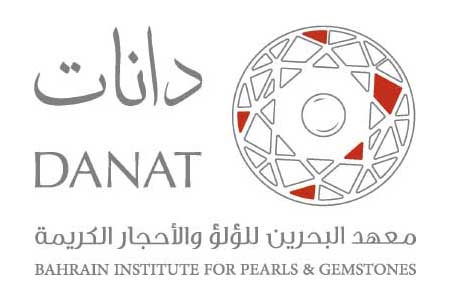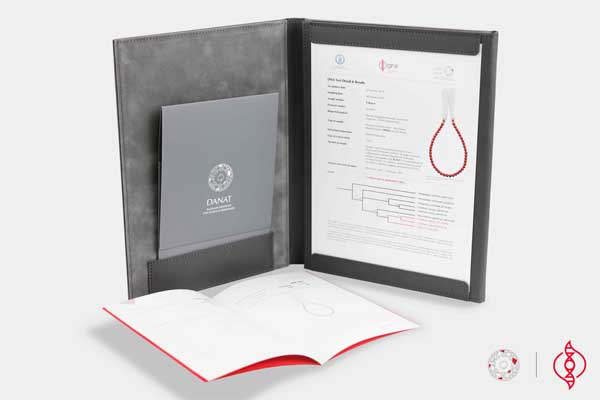 Precious coral is a biogenic gem material that has been used since the Neolithic times and cherished in various cultures and geographies. It is produced in eight species of colonial marine polyps (cnidarian invertebrates), belonging to the family Corallidae of the Anthozoa class, that live in relatively deep water. The vast majority of corals, more than 7,300 species, are not used un jewellery and some are the well-known reef-building corals. Precious corals are essentially composed by biomineralised calcium carbonate (calcite) with varying amounts of different types of organic matter. Precious corals have been mostly fashioned as beads and cabochons, but jewellery pieces with coral cameos as well as carvings and “objets d’art” are also popular.
Precious coral is a biogenic gem material that has been used since the Neolithic times and cherished in various cultures and geographies. It is produced in eight species of colonial marine polyps (cnidarian invertebrates), belonging to the family Corallidae of the Anthozoa class, that live in relatively deep water. The vast majority of corals, more than 7,300 species, are not used un jewellery and some are the well-known reef-building corals. Precious corals are essentially composed by biomineralised calcium carbonate (calcite) with varying amounts of different types of organic matter. Precious corals have been mostly fashioned as beads and cabochons, but jewellery pieces with coral cameos as well as carvings and “objets d’art” are also popular.
High-end jewellery and art pieces containing precious corals are frequently submitted to gemmological laboratories for reports. A standard coral gemmological report typically mentions the identification of the material as coral, sometimes with its trade name, and addresses the possible common treatments (e.g., polymer impregnated, colour treated). Over the last couple of years, requests for more information on corals’ species and the geographic area where they were harvested became more frequent by coral traders, collectors and auction houses. This demand is justified due to the fact that some corals products, as well as other biogenic gem materials, are subject to international regulations to monitor its trade and to collect information to assist in resource management laws, namely fishing regulations.
Since June 2019 and in order to meet this increasing demand for sustainable sourcing, DANAT began offering a specialized coral DNA Fingerprint Report (DFR). DFR presents a set of sophisticated non-destructive and micro-destructive tests, involving outsourced DNA sequencing data obtained on the submitted precious coral samples (or in random samples in case of a necklace or strand) in close collaboration with the Department of Biology of the Federico II University in Naples (Italy). With this micro-destructive test, a small amount of the sample is carefully extracted from an inconspicuous area in order to determine its identity down to the species level through the study of the complex nucleotide sequence. This test is performed by comparing sequences of gene traits on the studied samples with those on reference samples. These sequences are then used in the construction of a neighbour-joining phylogenetic tree, finally identifying the species of the sample which is presented in the report. In parallel, the results of additional confirmatory advanced tests collected in-house are also presented in the report, namely a plot with Laser Ablation–Inductively Coupled Plasma–Mass Spectrometry (LA-ICP-MS) data, that has been proven useful to determine distinctive coral populations, since trace elements data may be compared to the results of the chemical analysis on corals from known species and geographic origin at DANAT’s reference collection. Other advanced spectroscopic analysis are also performed to back-up the above mentioned biological and trace element analysis, namely UV-Visible-NIR, infrared (FTIR), Raman and Photoluminescence (PL) which are graphically presented on the report, showing the nature of the inorganic and organic matter in the sample, notably the colouring agents (e.g. pigments) typical of the naturally coloured corals. During the last few months, the specialized research staff at DANAT has developed strong confirmatory protocols of these tests to ensure the reliability and the solid status of the results presented.
DFR on precious coral is the result of the close collaboration between DANAT, the Coral Commission of the World Jewellery Confederation (CIBJO), headed by its President Enzo Liverino and the Federico II University in Naples, Italy. Through DANAT’s adoption of the highest professional standards, all to ensure, protect and enhance public trust in pearls, gemstones, and jewellery, will soon issue similar DFR’s for natural pearls and possibly other gem materials in the future (e.g. ivory). Copies of DANAT’s first DFRs’ were available for viewing at the DANAT booth at the Hong Kong show in June and will be available again at September’s Jewellery and Gem Fair 2019.
DANAT, an institute established in line with the revival of the Kingdom's pearling industry, an initiative under the Executive Committee’s projects, is aimed at placing the Kingdom as a leading destination regionally and internationally for pearl and gemstone expertise.
